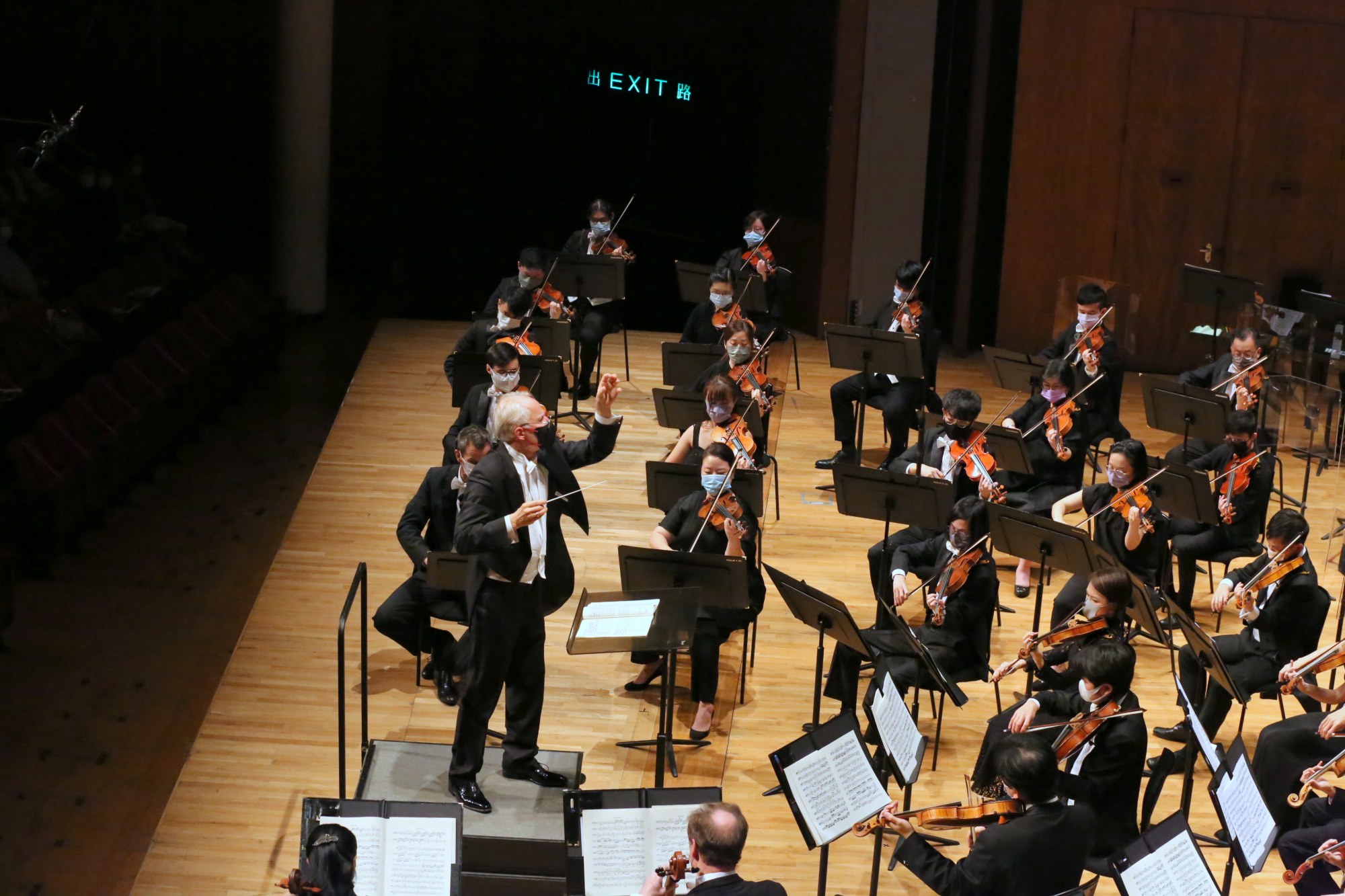
Review | Pianist Alexander Ullman’s Rach 3 with the Hong Kong Sinfonietta skilfully brings out the concerto’s emotional depth
- Young British soloist shows technical mastery of the difficult concerto and conveys well its emotional range, but Hong Kong Sinfonietta lets him down somewhat
- They excelled in Arvo Pärt’s tribute to Benjamin Britten, but their rendition of Brahms’ Symphony No 4 under guest conductor Ola Rudner lacked sophistication
In Scott Hick’s 1996 film Shine, the late Sir John Gielgud’s character posits that “no one’s ever been mad enough to attempt the Rach 3”, to which Noah Taylor, as the pianist David Helfgott, replies: “Am I mad enough professor? Am I?”
The film popularised anew Sergei Rachmaninoff’s third piano concerto while highlighting the work’s profound technical challenges and overwhelming emotional drive.
The 30-year-old British pianist Alexander Ullman is among the latest to be “mad enough” to take it on. Performing the “Rach 3” in Hong Kong on November 20, he rose above its technical insanity and produced a nuanced performance that was confidently executed.
Ullman’s interpretation measures up well against Rachmaninoff’s own performance of the work recorded in 1940. His first movement was less hurried, and the British pianist is a master technician who produced rhythmic crispness in the intricate passages and bold plunges for the powerful surges elsewhere.
Beyond his technical acumen, Ullman truly brought the piano to life – imitating the sounds of a human voice at times, and delivering a colourful spectrum of the most profound emotions.
It was a grave pity that the orchestra was not alert to these sensitivities. They did not seem to fully respond to the directions from guest conductor Ola Rudner either, resulting in a limited dynamic range, some lacklustre rhythmic execution and substandard blending.

The orchestral opening to the second movement was pedestrian, but interest in the material was elevated with the piano’s entry. At times, it appeared that Ullman was playing from just within himself, like a polished gem mounted on a bland clasp.
The finale demonstrated a better interplay between orchestra and soloist, with the second theme receiving a cheeky reading in particular. Generally the orchestra were too cautious and needed far greater emotional clout.
Ullman gave two encores. The first was Arvo Pärt’s Für Alina, which tied in nicely with his Cantus in Memoriam Benjamin Britten, which opened the concert and illuminated the pianist’s exquisitely delicate touch. The second, Chopin’s Minute Waltz, provided further evidence of his digital dexterity.
It was a pleasure to see the young pianist make his Hong Kong debut. He clearly has gifts that will fashion a career of impact and legacy.
Incidentally, the Cantus was scored for a string orchestra and tubular bells and is one of the signature pieces of the Estonian composer, who frequently looks to the past for inspiration and is commonly associated with a school of late-20th century music known as “holy minimalism”.
The Cantus demonstrates harmonic simplicity and a religious mysticism. The orchestra was successful here, capturing the solemnity of the death knells, richly enveloped in a tapestry of string lines. The Sinfonietta exuded warmth and the necessary atmospheric reading to pay tribute to one of Pärt’s most admired colleagues.
After the intermission, the orchestra continued with Johannes Brahms’ Symphony No. 4. Brahms, like Pärt, also adapted sources from the past. Conductors of this work face the difficulty of both illuminating the micro-level motivic development and highlighting significant structural moments for a grander understanding of its construction.
Rudner made attempts to bring focus to both and demonstrate the complex interplay between them, but this level of sophistication was not ultimately fulfilled.
The texturally dense writing in the lower registers, which Brahms is known for, was not projected sufficiently, nor were many of the musical lines carefully shaped. Rudner was certainly working hard physically, but the collective result was not indicative of these efforts.
The tempo was also problematic, slowing to a point in the second movement that sounded lethargic and resulted in a loss of momentum in the ensuing Scherzo. At times, it seems as though we were observers in a rehearsal, which was a shame given a richly executed solo cello passage in the Andante Moderato, and the energetic end to the first movement.
“Great Piano Concertos: Alexander Ullman Plays Rachmaninov No. 3”, Hong Kong Sinfonietta and Alexander Ullman, Hong Kong City Hall Concert Hall. Reviewed November 20.
